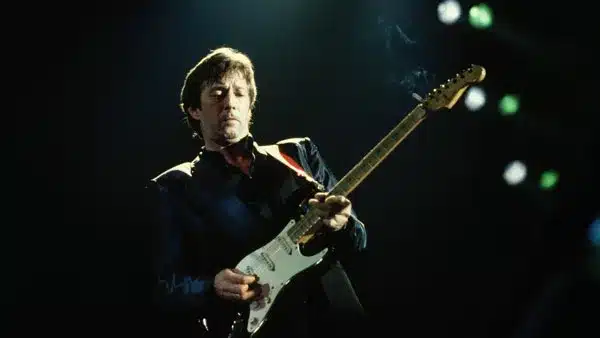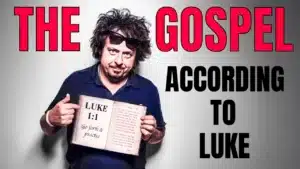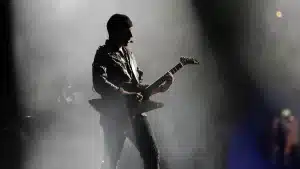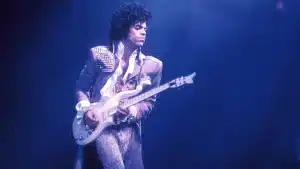Clapton’s style – like so many of the great blues guitarists – incorporates the playing of the heroes he grew up listening to, such as the ‘three Kings’ (Freddie, BB and Albert), Buddy Guy and Robert Johnson.
His fieriest playing came during the late-60s Cream/Gibson era, when he delivered blues progressions and rock lead with his ferocious ‘woman’ tone.
Eric’s solo career kicked off in the 70s with a switch to Fender Stratocasters and a more relaxed Southern rock style on tracks such as After Midnight and Motherless Children.
By the mid 80s, Eric’s now tight but lyrical phrasing and famous creamy sound – as heard on Forever Man – had become the norm.
1. Basic Legato Lick
The secret to the opening phrase is to pick the first-string 10th fret note, rather than using a hammer-on (the timing/articulation and sound can suffer). The 11th fret A# is a staple Clapton major 7th idea, even though technically it shouldn’t work in a blues theory context!

2. Triple Legato Lick
The staccato notes, triplet lick and quarter-tone bends are classic early-period Clapton. Try these phrases over any part of a 12-bar blues, although the line implies the movement that you’d typically find at the end of the cycle or phrase over the I chord.

3. Turnaround Lick
This fiery lick comes complete with bluesy minor-to-major-3rd hammer-ons and feels like a development of a classic Albert King style lick. The final note lands a change to the V chord, typical of the final bar of a 12 bar progression.

4. Doublestop Bending
The country-style chromatic line at the end of this lick is typical of Eric’s late 70s style. Practise the shifts and diad bends before piecing the lick together.

5. Combining Blues Ideas
As Eric’s blues vocabulary developed in the 80s and 90s, he would play combinations of ideas, such as the triplet legato phrase (bar 1) and the wide Albert King-style three-semitone bends (bar 3). The latter idea works really well dragged across the beat in quarter-note triplets and released slowly emulating that ‘crying’ sound as heard in Clapton’s solo during the classic Beatles track While My Guitar Gently Weeps.

6. Fingerpicked Hendrix-style Chords
Although not an early influence, Jimi Hendrix‘s style can be heard in some of Eric’s chordal improvising (especially since the 90s), seen here as diad slides and hammered-on chord embellishments. Using fingerstyle will help you get the separation between bass notes and upper strings, also giving you a softer sound. Note the use of the infamous ‘backdoor cadence’ in the third bar that sees an A7 (the bVII in the key of B) as a really nice substitution for the V chord.






